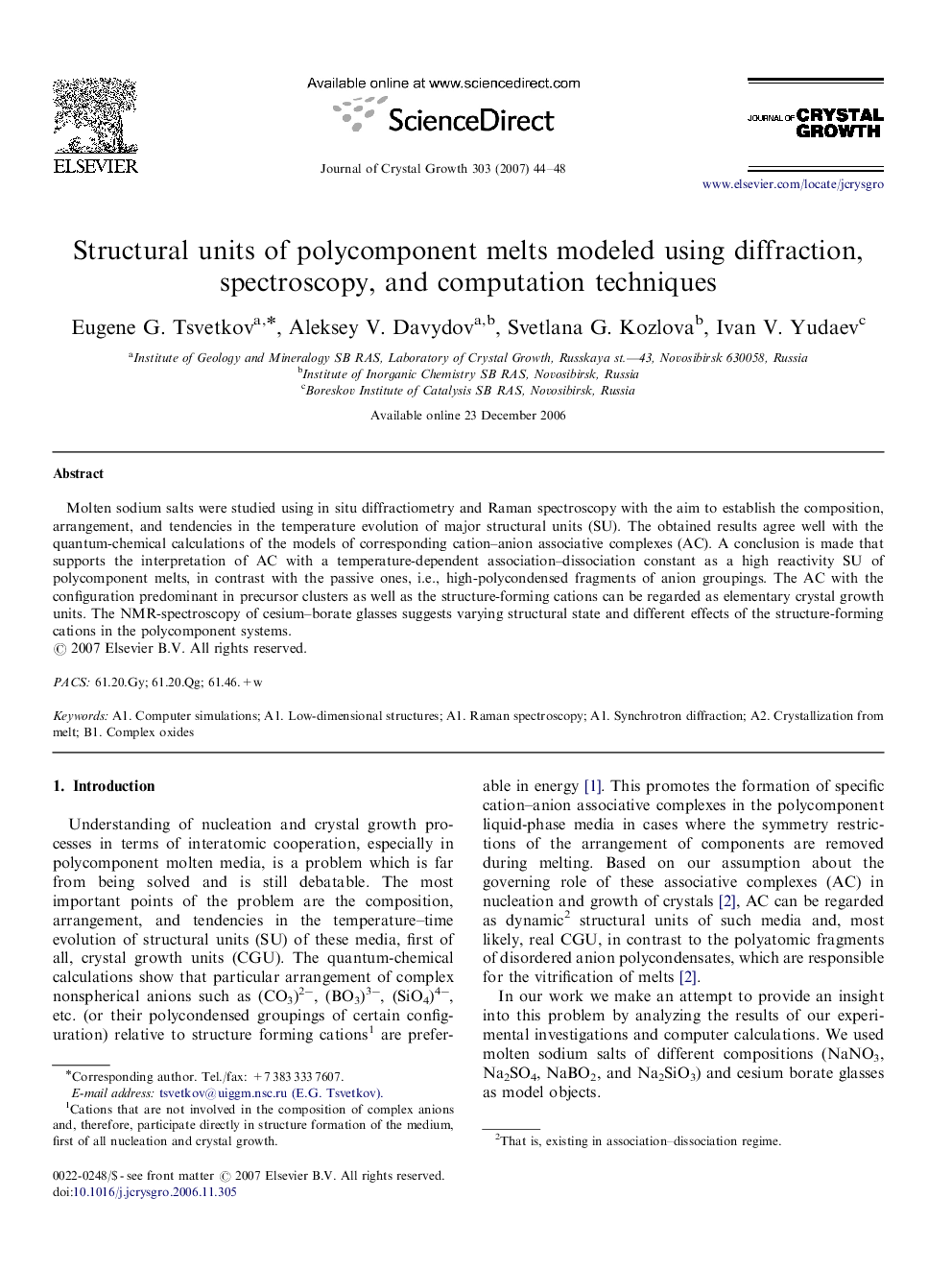| Article ID | Journal | Published Year | Pages | File Type |
|---|---|---|---|---|
| 1795772 | Journal of Crystal Growth | 2007 | 5 Pages |
Abstract
Molten sodium salts were studied using in situ diffractiometry and Raman spectroscopy with the aim to establish the composition, arrangement, and tendencies in the temperature evolution of major structural units (SU). The obtained results agree well with the quantum-chemical calculations of the models of corresponding cation-anion associative complexes (AC). A conclusion is made that supports the interpretation of AC with a temperature-dependent association-dissociation constant as a high reactivity SU of polycomponent melts, in contrast with the passive ones, i.e., high-polycondensed fragments of anion groupings. The AC with the configuration predominant in precursor clusters as well as the structure-forming cations can be regarded as elementary crystal growth units. The NMR-spectroscopy of cesium-borate glasses suggests varying structural state and different effects of the structure-forming cations in the polycomponent systems.
Keywords
Related Topics
Physical Sciences and Engineering
Physics and Astronomy
Condensed Matter Physics
Authors
Eugene G. Tsvetkov, Aleksey V. Davydov, Svetlana G. Kozlova, Ivan V. Yudaev,
